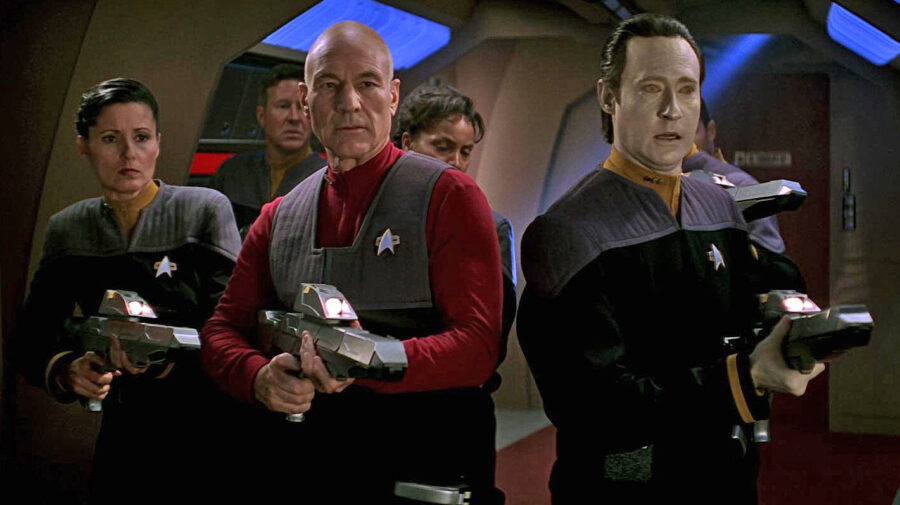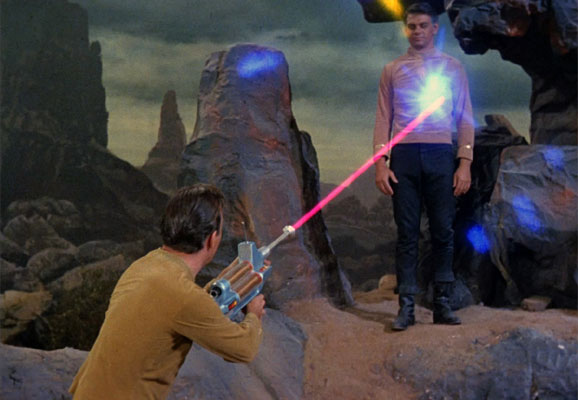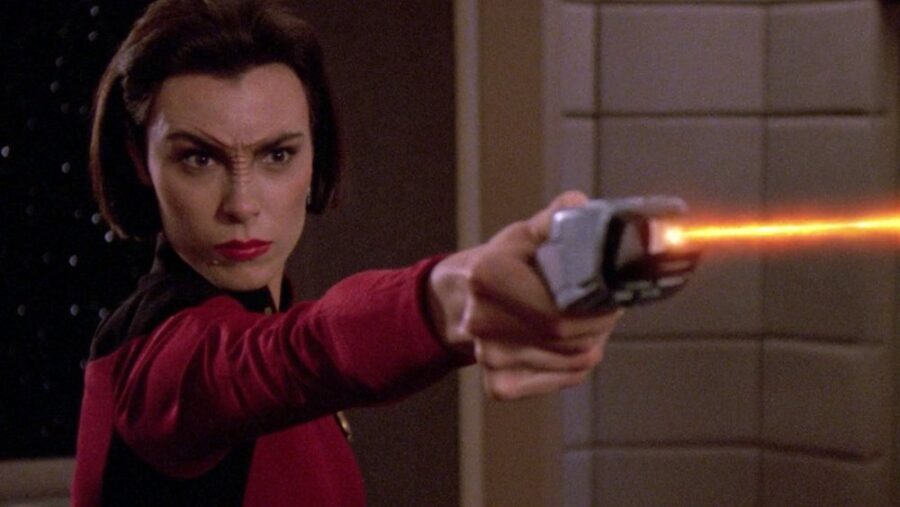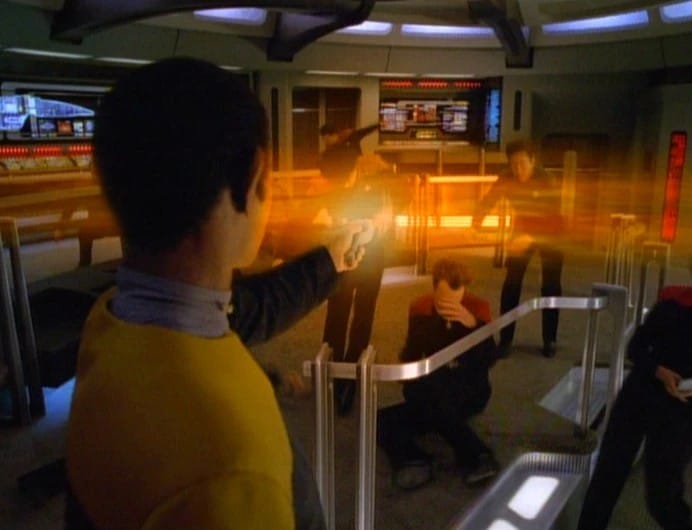How Phasers Work In Star Trek
We explain the science behind Star Trek's phasers.

Though euphemistically (and inaccurately) referred to as “ray guns” by even a couple of characters in Paramount‘s Star Trek, phasers are the ever-present sidearm of choice in Starfleet and are much more sophisticated and thought out than anything Buck Rogers ever wielded. But how do they work and why are they Starfleet’s primary weapon? The answers are . . . stunning.
(We couldn’t resist. Okay, we could have, but we didn’t.)

Star Trek’s phasers have taken many shapes and sizes throughout its six-plus decades, from the tiny “cricket” seen in Star Trek: The Next Generation to the very large and powerful ones on the Enterprise. They have also had a lot more functions and settings that just “stun” and “kill.” Their presence in the series has long caused problems for the more pacifist leanings of its core philosophy and that of its creator.

The original common sidearms that appeared in the first Star Trek pilot “The Cage” were not technically phasers as they were simply referred to as lasers, without much nuance or anything to make them very unique.

But by the second pilot, “Where No Man Has Gone Before,” they had morphed into the first phaser—a rifle version famously used in promotional photographs featuring Kirk and Spock. That weapon was nixed for the rest of the series, though, owing to creator Gene Roddenberry’s feeling that it looked too lethal and his idea that guns should have, by the 23rd century, gone the same way of extinction as the cigarette.
As something of a compromise, the ideas was introduced in the original Star Trek that phasers could be set to stun, only “phasing” someone who posed a threat. This gentler weapon concept fit better with Roddenberry’s desire for his sci-fi series to lean toward peacefulness, whether it always achieved that goal or not. Though the weapons seem to project a steady beam, they are actually more sophisticated than that.

Star Trek’s phasers are actually phased array pulsed energy projectile weapons that emit tiny pulses of subatomic particles called “rapid nadion.” If you’re scratching your head wondering why you’ve never heard of these particles, it’s because they were invented for Star Trek, a fact which might aid their scientific plausibility. The weapons also contain superconducting crystals that refract or “rectify” these particles, which are then “monopolarically phased” through a “Kawamura-Franklin Circuit,” which emits the particles as pulses.
This pulsing explains in part why Star Trek’s phasers sometimes fire continuously and other times emit short bursts of energy. They’re actually always producing short bursts, just at different rates and for different durations. This adaptability allows both the sidearms and the ship-mounted versions to be adjusted to varying frequencies, allowing for better defense against certain threats like the Borg (cf. “The Best of Both Worlds,” TNG).

Star Trek has long faced practical problems with reference to phasers. It has been surmised that their power requirements and the heat they might produce would make them impractical if not impossible to use and carry. However, the fact that they focus a fictional subatomic particle gives at least some technical leeway as it cannot be known what power would be required to focus these particles or what heat, if any, that process would produce.
A few times, Star Trek shows characters using phasers to heat up rocks for warmth, showing that the particles can generate heat, but the devices themselves never seem to get too warm, even when their highest setting seems to evaporate their targets. They can, however, be set to overload and become explosive devices. This feature goes all the way back to the lasers seen in “The Cage.”

Star Trek also has characters at times setting their phasers to a wide dispersal pattern that allows a group of targets to be stunned at once, leaving us to wonder why this setting isn’t used more often. In any case, all the diverse uses of phasers make them far superior to the tranquilizer pellets that were considered early in the series’ development.
And yes, they are based on some pretty sketchy science, but that’s not something Star Trek has ever been afraid of, even though it has long employed scientific advisors to bring in as much real astrophysics and technology as possible.
Though Star Trek’s phasers are a little iffy with respect to their actual mechanics (don’t get us started on how one figures out what setting will “stun” someone), they do represent an attempt at gentler forms of defense and have certainly made their mark on sci-fi history.












